History
| 1653 | Ozu Seizaemon-Nagahiro opens paper wholesale store Ozu Seizaemon-ten in Edo’s commercial district of Odemmacho (currently the location of the Head Office in Tokyo)
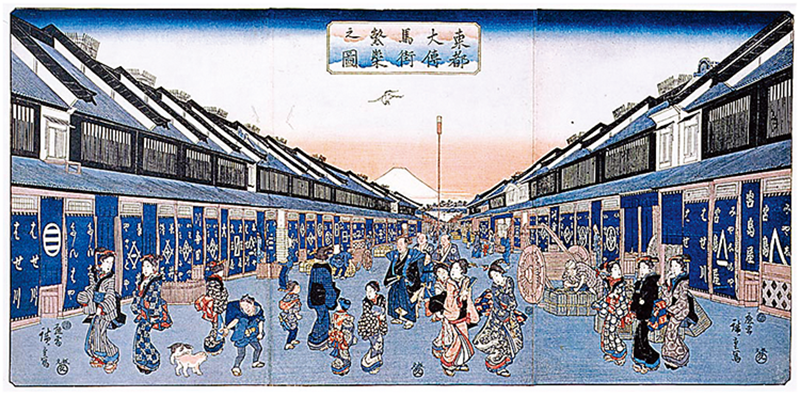 “Prosperous Odemma district of the Eastern Capital” by Utagawa Hiroshige |
|---|---|
| 1698 | Ozu opens a cotton store in Odemmacho |
| 1755年 | Ozu joins a currency purveyor group of the Kishu feudal domain in Matsusaka (Mie Prefecture), and is appointed currency purveyor to Edo (Tokyo)
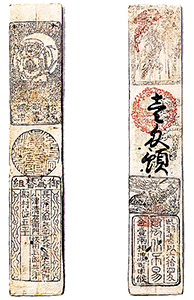 Back Front Hansatsu (feudal scrip used as currency) |
| 1784 | The 7th generation, Seizaemon-Nagayasu, opens Ohashi-ya, facing the main store, also handling tea and skipjack tuna shavings “imported” from Osaka
 Signboard of Tsuchinoto Ichiban-gumi paper wholesaler association |
| 1880 | Ozu takes over the Western machine-made paper business of YK Tokyo Yoshi Kaisha and renames it Ozu Yoshi-ten (capital 100,000 yen)
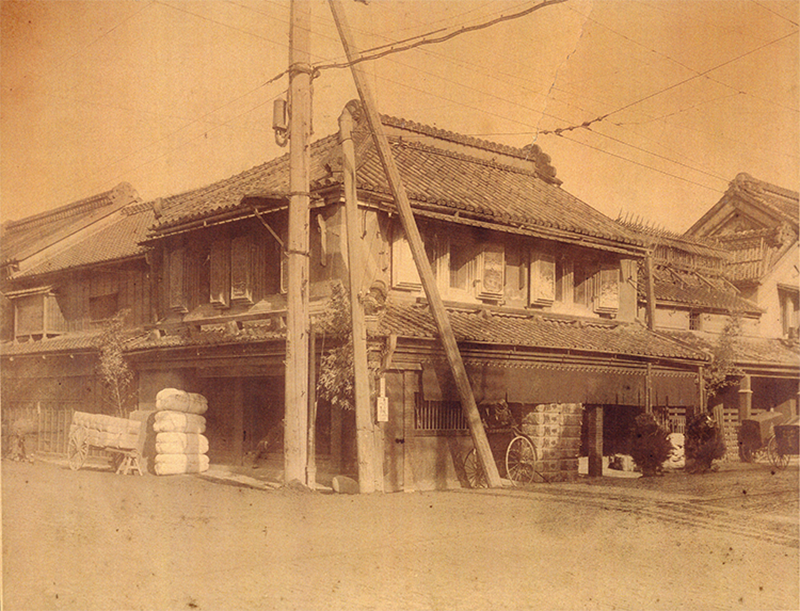 Store in the Meiji period (1868–1912) |
| 1886 | Ozu and fellow cotton wholesalers form a tie-up and establish spinning mill Tokyo Boseki Kaisha (capital 500,000 yen) |
| 1899 | Ozu establishes Ozu Bank (capital 100,000 yen) in Matsusaka, Mie Prefecture
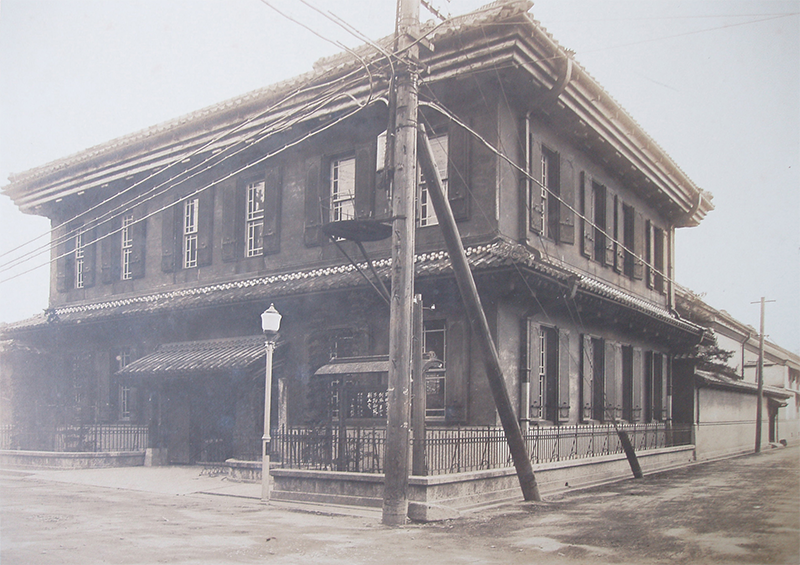 Ozu Bank building in Matsusaka |
| 1903 | Ozu purchases the filament and spinning factory of Nippon Saishi Boseki Kaisha and establishes Ozu Saishi Boseki-jo
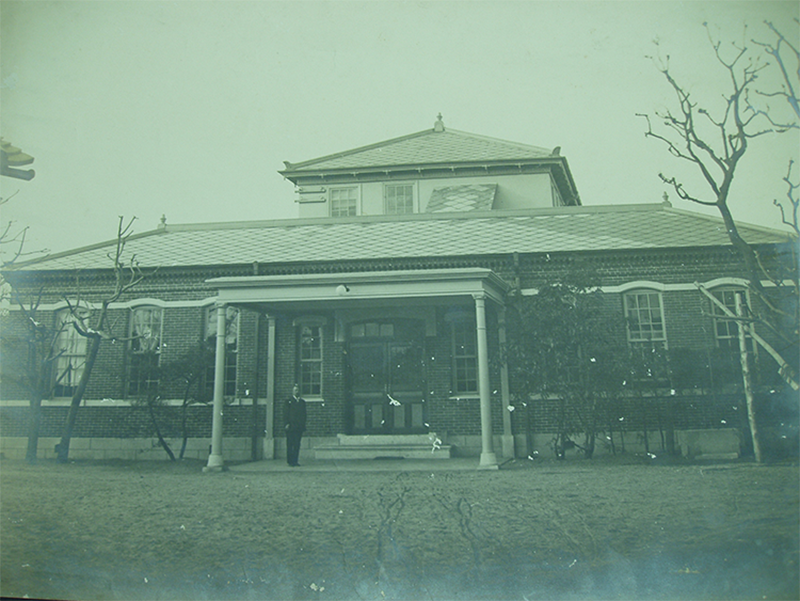 Ozu Saishi Boseki-jo office |
| 1920 | Takebayashi Yoko is absorbed into Ozu Saishi Boseki-jo, establishing Ozu-Takebayashi Kigyo KK |
| 1927 | Ozu Bank merges with Yokkaichi Bank (currently Mie Bank) amid the Showa financial crisis |
| 1929 | GSK Ozu Shoten is established to form an incorporated organization |
| 1939 | Ozu Shoji KK is established in Nihombashi-ku, Tokyo City (currently the location of the Head Office) to modernize management |
| 1941 | Manchuria Ozu Shoji KK (capital 150,000 yen) is established in Hsinking New Capital (Changchun) |
| 1944 | Ozu Shoji KK is renamed Ozu Corporation |
| 1946 | The domestic paper sales division of GSK Ozu Shoten is acquired, integrating paper sales divisions amid the lifting of the price control ordinance |
| 1957 | Ozu Corporation’s Western paper division merges with Honcho Shoji KK, establishing KK Ozu Yoshi-ten (capital 20 million yen) to expand Western paper sales
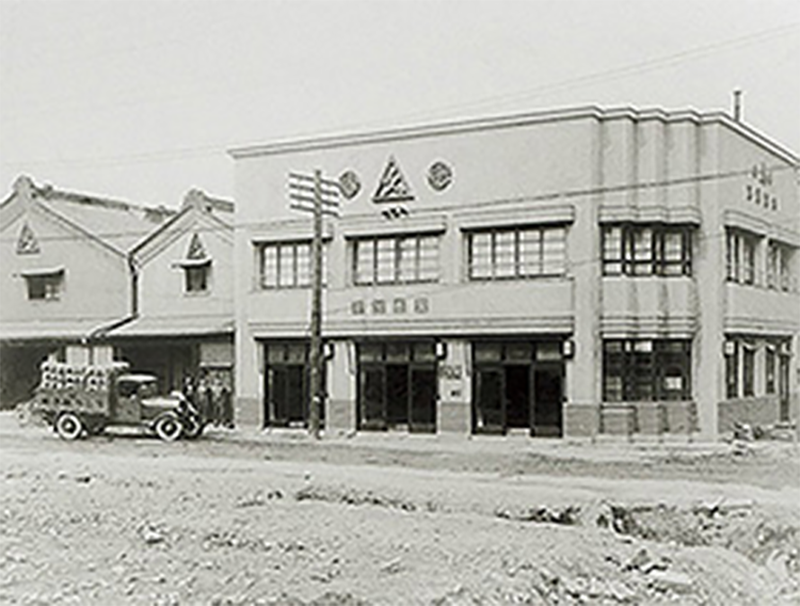 GSK Ozu Shoten |
| 1964 | Chofu sales office opens |
| 1967 | Osaka sales office (currently Osaka Branch) opens |
| 1971 | Ozu celebrates 300th anniversary of founding, completing Ozu Honkan Building at the founding location of Ozu Honten |
| 1973 | Asahi-Ozu Corporation (capital 20 million yen) is established in Chuo-ku, Tokyo, and a nonwovens processing plant constructed in Nobeoka, Miyazaki Prefecture, as a 1:1 joint venture with Asahi Chemical Industry Co., Ltd. (currently Asahi Kasei Corporation) |
| 1974 | Chiba sales office opens |
| 1975 | Saitama Branch opens |
| 1978 | GSK Ozu Shoten is renamed Ozu Shoten Co., Ltd. Ozu Corporation capital is increased to 50 million yen |
| 1979 | KK Ozu Yoshi-ten is renamed Ozu Kami Shoji KK |
| 1982 | KK Ozu Yoshi-ten is renamed Ozu Kami Shoji KK |
| 1983 | Distribution Center (currently Saitama No. 1 Logistics Center) opens |
| 1984 | Ozu celebrates 330th anniversary of founding, merging with Ozu Kami Shoji KK (capital 100 million yen) to expand operations and streamline management |
| 1989 | Dec. Ozu Techno Co., Ltd. (capital 25 million yen) is established in Chuo-ku, Tokyo, for nonwoven products processing |
| 1992 | June Ozu merges with KK Taisei Yoshi-ten and acquires Washi Hakubutsuho business rights from Ozu Shoten Co., Ltd. to launch retail division |
| 1993 | Jan. Omiya No. 2 Logistics Center (currently Saitama No. 2 Logistics Center) opens Feb. Ozu Corporation capital is increased to 510,200,000 yen |
| 1995 | Jan. Chofu Branch is relocated; Fuchu Logistics Center and Fuchu Branch open Apr. Overseas Development Office China liaison office (currently Wuhan Office) opens |
| 1996 | Feb. Ozu Corporation shares are listed on Japan Securities Dealers Association (currently JASDAQ); capital is increased to 889,700,000 yen July Sendai satellite office* opens * Currently renamed and continuing operations under Azfit Co., Ltd. |
| 1997 | Nov. Ozu obtains medical devices manufacturer and distributor license (GMP) from Ministry of Health and Welfare (currently Ministry of Health, Labour and Welfare) |
| 1998 | Jan. Ozu History Museum opens in Washi Hakubutsuho Dec. Ozu merges with Honei KK to further streamline management foundation |
| 1999 | Mar. Ozu Techno Co., Ltd. acquires all issued shares of Nippon Plant Seeder Co., Ltd., making it a subsidiary May Singapore liaison office (currently Singapore Branch) opens Dec. Ozu Corporation capital is increased to 1,322,210,000 yen |
| 2000 | Sept. Kanagawa Logistics Center* and Kanagawa Branch open *Currently renamed and continuing operations under Azfit Co., Ltd. |
| 2001 | June Ozu Corporation shares are listed on Tokyo Stock Exchange Second Section |
| 2002 | Oct. Ozu Group obtains ISO 14001 certification for environmental management system |
| 2003 | Apr. Ozu celebrates 350th anniversary of founding Sept. Saitama No. 3 Logistics Center opens |
| 2004 | Jan. Ozu compiles 350-year annals July Hong Kong liaison office (later Hong Kong Branch) opens |
| 2005 | Jan. Ozu Washi and Ozu History Museum are relocated to Ozu Honkan Building (Ozu founding location) |
| 2006 | Sept. Ozu acquires all issued shares of KK Kamikano, making it a subsidiary |
| 2007 | Apr. Shanghai liaison office opens Ozu Group obtains ISO 9001 certification for quality management system Dec. Household papers and daily sundries business is transferred to KK Kamikano in an absorption-type split; KK Kamikano is renamed Azfit Co., Ltd. |
| 2008 | May Kyushu satellite office opens June Plant factory is established in Fuchu, Tokyo, launching Nihombashi Yasai vegetables business |
| 2009 | Dec. Washi business is transferred to Ozu Shoten Co., Ltd. to concentrate management resources on the mainstay businesses of nonwovens and household papers |
| 2010 | June Tohoku satellite office and Chubu satellite office open |
| 2011 | Feb. Ozu (Shanghai) Trading Co., Ltd. is established |
| 2013 | May Ozu acquires all issued shares of Dipro Co., Ltd., making it a subsidiary |
| 2014 | July Ozu (Thailand) Co., Ltd. is established July Ozu Corporation shares are listed on Tokyo Stock Exchange First Section |
| 2017 | Mar. Ozu Corporation, Enviro Tech Chemical Services, Inc., and the National Federation of Agricultural Cooperative Associations (Zen-noh) establish joint venture Enviro Tech Japan Co., Ltd. (capital 100 million yen)
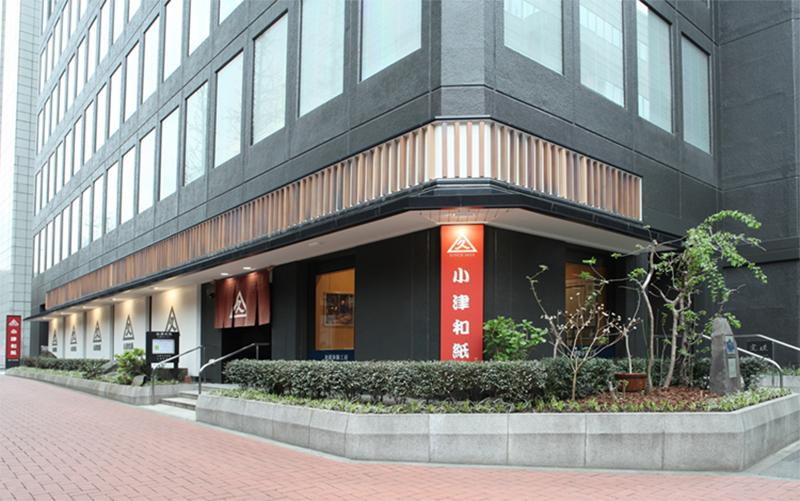 Ozu Honkan Building at present |
Origins of company name

The history of paper wholesaler Ozu (currently the Ozu Group) begins with Ozu Seizaemon-Nagahiro. On August 9, 1653, at the age of 29, Nagahiro opened a store at Odemmacho 1-chome, Edo (currently Tokyo). He named his business Ozu-ya and designed the Uroko Kyu symbol as a trademark. The name Ozu-ya was recommended by Ozu Sanjuro, a close friend and fellow native of Matsusaka, as being an auspicious name for a prospering store. At this time, Nagahiro himself also took up the name Ozu-ya Seizaemon or Ozu Seizaemon.
The Uroko Kyu crest, designed with a triangular fish scale (uroko) and the character kyu, has been in use since our founding. An embodiment of our relationship with our customers and the unwavering management efforts of our predecessors, we believe this is the greatest asset and cherished treasure of the Ozu Group.
